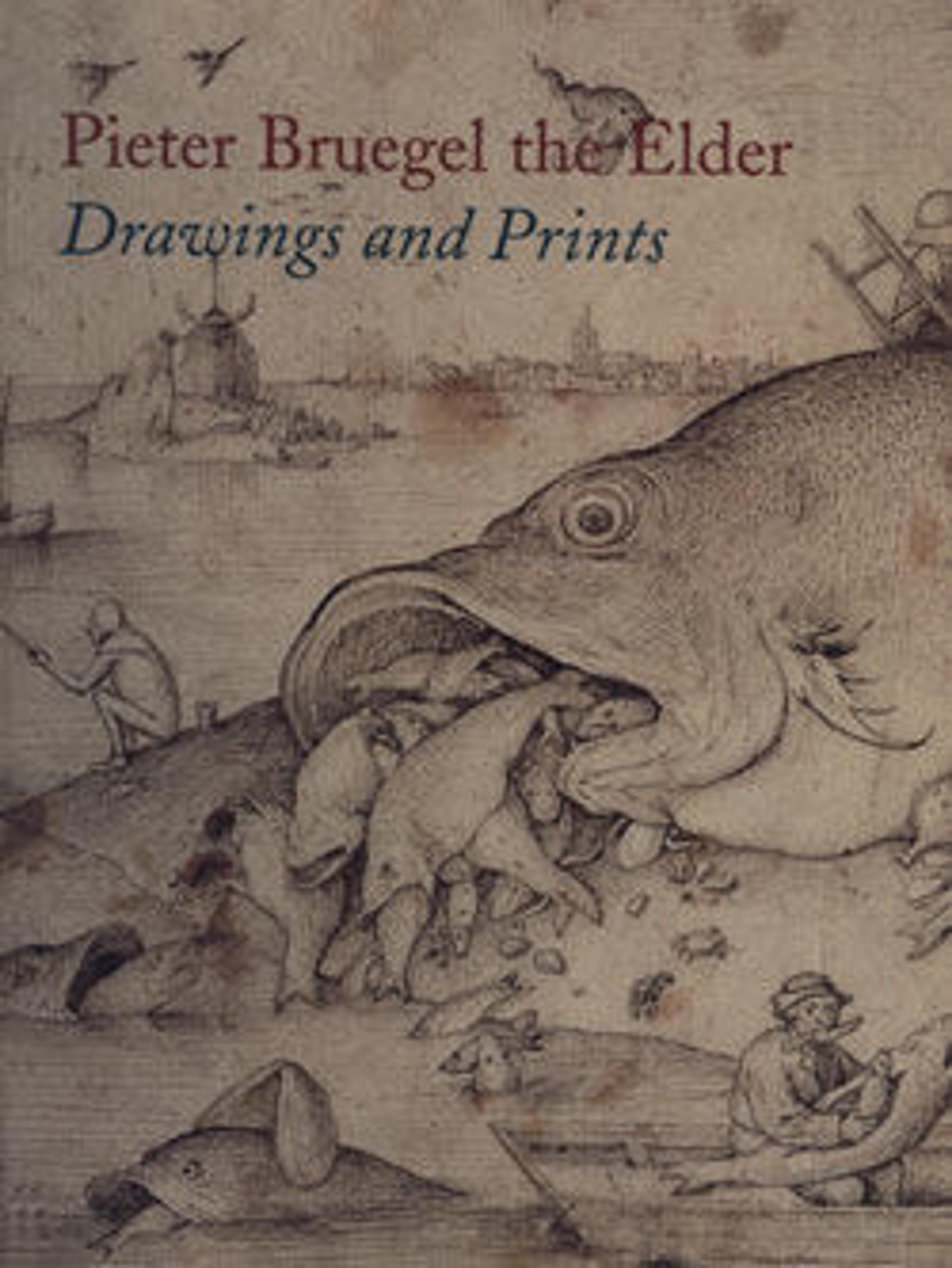The Land of Cockaigne
The Land of Cockaigne, known in Dutch literature as Luilekkerland (country of the lazy and gluttonous), was described in very popular stories as a mythical place where there is no need to work, and where food and drink are so abundant that we need only open our mouths to take in what we desire. In this print, which accurately follows in reverse Bruegel's 1567 painting of the same title (Munich, Alte Pinakothek), three figures—a soldier, a farmer, and a clerk—are shown sleeping off the effects of their overindulgence, or waiting for more drink to imbibe—as the clerk does at left. Some of the remains of their meal are strewn on the platform encircling the tree in the center, while the mountain of buckwheat in the background and the house covered with tarts at right indicate this land has plenty to spare. The image's moralizing intent—to decry the vices of sloth and gluttony—is apparent from the first part of the Dutch inscription below: "The lazy and gluttonous farmers, soldiers, and clerks get there and taste all for nothing." Though Bruegel is credited with the inspiration for the design—"P. Bruegel. inventor" appears in the lower left corner—it is unclear whether the master was involved in the production of the print, which was probably engraved by Pieter van der Heyden.
Artwork Details
- Title:The Land of Cockaigne
- Artist:Attributed to Pieter van der Heyden (Netherlandish, ca. 1525–1569)
- Artist:After Pieter Bruegel the Elder (Netherlandish, Breda (?) ca. 1525–1569 Brussels)
- Date:after 1570?
- Medium:Engraving; first state of three
- Dimensions:Plate: 8 3/16 x 11 in. (20.8 x 27.9 cm)
Sheet: 9 1/8 x 11 15/16 in. (23.1 x 30.4 cm) - Classification:Prints
- Credit Line:Harris Brisbane Dick Fund, 1926
- Object Number:26.72.44
- Curatorial Department: Drawings and Prints
More Artwork
Research Resources
The Met provides unparalleled resources for research and welcomes an international community of students and scholars. The Met's Open Access API is where creators and researchers can connect to the The Met collection. Open Access data and public domain images are available for unrestricted commercial and noncommercial use without permission or fee.
To request images under copyright and other restrictions, please use this Image Request form.
Feedback
We continue to research and examine historical and cultural context for objects in The Met collection. If you have comments or questions about this object record, please contact us using the form below. The Museum looks forward to receiving your comments.
